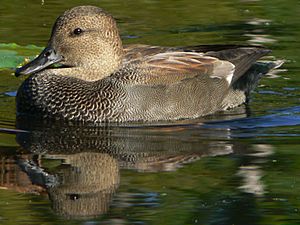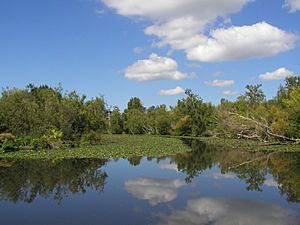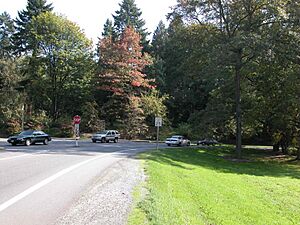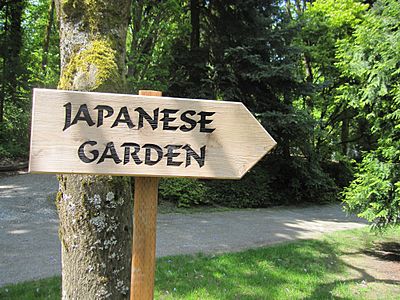Washington Park Arboretum facts for kids
Washington Park is a large public park in Seattle, Washington, United States. Most of this park is home to the Washington Park Arboretum. An arboretum is like a special garden where many different kinds of trees and plants are grown for people to study and enjoy.
The Arboretum is a team effort. It's run by the University of Washington, the Seattle Parks and Recreation department, and a group called the Arboretum Foundation. Besides the Arboretum, Washington Park also has a playfield and the beautiful Seattle Japanese Garden. A stream called Arboretum Creek flows through the entire park.
The park is surrounded by interesting areas. To the north is Union Bay. To the west are the neighborhoods of Montlake and Madison Valley. South of the park is the Washington Park neighborhood. To the east, you'll find the Broadmoor Golf Club.
Several roads run through or near the park. Lake Washington Boulevard E. goes north and south. Another road, Arboretum Drive E., runs along the eastern edge of the Arboretum. State Route 520 is a big highway that crosses the northern part of the park. You can find a walking path under the highway bridges. This path leads you along the Lake Washington ship canal and into the Arboretum's gardens.
The Arboretum is famous for its "Azalea Way," especially in springtime. This part of the park is filled with colorful azalea flowers. It's a popular spot for walks, photos, and art. Azalea Way looks very neat and tidy, which is different from the wilder, tree-covered parts of the Arboretum. The city of Seattle owns the land, but the University of Washington mostly manages the Arboretum.
Contents
Park History

Washington Park was built on land that was once used for logging trees. For 60 years, a company called Puget Mill cut down trees here. In 1920, the land was split into two parts. The eastern part became the Broadmoor Golf Club. The western part, which was about 230 acres, was given to the city.
The city then decided to create a park and an arboretum on this land. In 1934, the Washington Park Arboretum was officially started. This happened after an agreement between the University of Washington and the City of Seattle.
Highway Changes
The "Ghost Ramps"
You might see some old, unused highway ramps in the marshy areas of the Arboretum. These are part of State Route 520. People often call them "ramps to nowhere" because most of them aren't used anymore. One ramp is still used for cars getting onto SR 520 heading east.
These ramps were meant to be part of a much bigger highway called the R. H. Thomson Expressway. This highway would have cut right through the Arboretum and continued into Seattle. But citizens protested against this plan. They held a "freeway revolt" on May 4, 1969. Even though some construction continued, the protests worked, and the highway plan was stopped in 1971.
The idea to stop the R. H. Thomson Expressway actually started with people not wanting SR 520 itself. An architect named Victor Steinbrueck wrote in 1962 that the highway would be "brutal" and would harm the peaceful area.
In 2013, the Washington State Department of Transportation decided to take down the ghost ramps. To remember them, a local art group created an art project called Gate to Nowhere in 2014. This art piece wrapped reflective material around some of the ramp's support columns. In 2016, some of the ghost ramps were taken apart. This made way for a new road connecting the new floating bridge to the land.
Future Plans
There have been plans to rebuild and expand State Route 520. These plans also include replacing the Evergreen Point Floating Bridge. This has worried the people who work at the Arboretum and those who visit the park.
The Arboretum community wrote a letter to the Washington State Department of Transportation. They explained that native plants, wetlands, and wildlife would be harmed. This would happen not only by taking land but also by the shadows and noise from the new roads. One idea to avoid this is the "Arboretum Bypass Plan." This plan suggests building the new highway over Union Bay, a bit further north than the current road.
Seattle Japanese Garden
The Seattle Japanese Garden is a beautiful 3.5-acre Japanese garden. It is located in the Madison Park neighborhood of Seattle, Washington. You can find it in the southern part of the Washington Park Arboretum. This garden is one of the oldest Japanese Gardens in North America. Many people consider it one of the most real and traditional Japanese Gardens in the United States.
See also
 In Spanish: Washington Park Arboretum para niños
In Spanish: Washington Park Arboretum para niños







